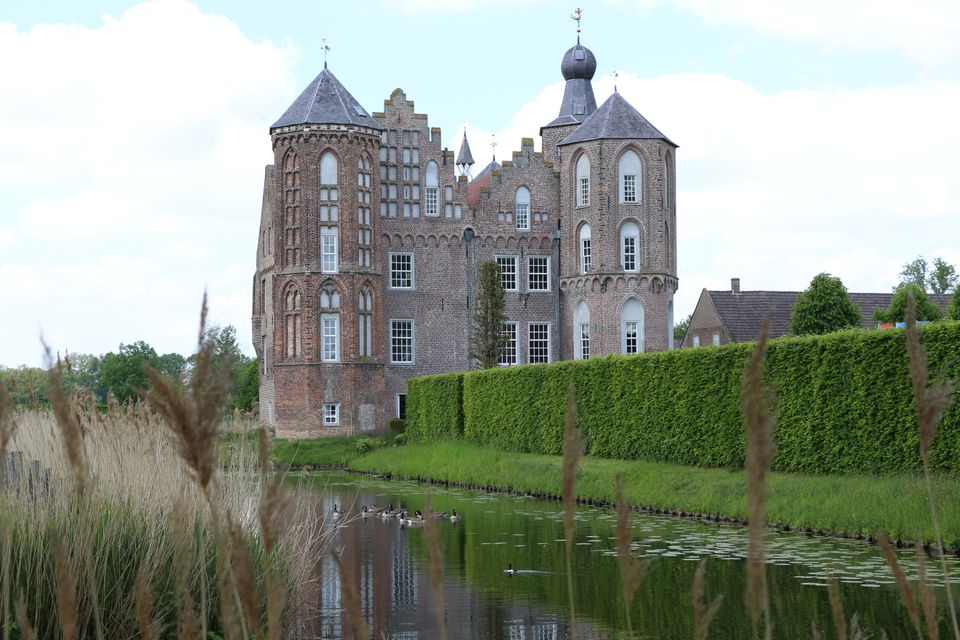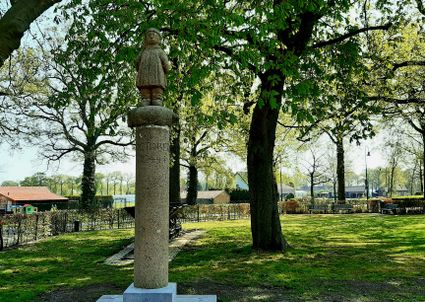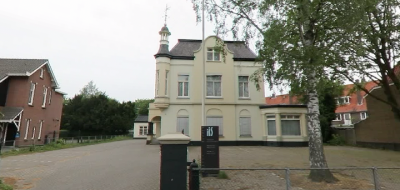Castle Croy Aarle-Rixtel
To this day, it is still not known when Croy Castle was built. How it got its name is. In any case, it is certain that in the year 1472, one Rutger van Erp owned a castle with a farm in Strijp, approximately 20 hectares in size. In 1477, Rutger van Erp sold this castle to Jacob van Croy, a member of the famous Van Croy family, belonging to the Burgundian court nobility. Jacob was the owner for only 17 years, however, because in 1494 he sold the castle again to Cornelis I van Bergen. It was probably Cornelis who had the castle extended to its current size. Cornelis also had the beautiful gatehouse built. Afterwards, many noble families lived in the castle. The last noble family was the Van der Brugghen family.
Mieke Keser ha…
To this day, it is still not known when Croy Castle was built. How it got its name is. In any case, it is certain that in the year 1472, one Rutger van Erp owned a castle with a farm in Strijp, approximately 20 hectares in size. In 1477, Rutger van Erp sold this castle to Jacob van Croy, a member of the famous Van Croy family, belonging to the Burgundian court nobility. Jacob was the owner for only 17 years, however, because in 1494 he sold the castle again to Cornelis I van Bergen. It was probably Cornelis who had the castle extended to its current size. Cornelis also had the beautiful gatehouse built. Afterwards, many noble families lived in the castle. The last noble family was the Van der Brugghen family.
Mieke Keser has lived in the beautiful gatehouse of Croy Castle for almost 20 years. Since the spring of 2006, she has made one of her rooms available for Bed & Breakfast. A unique experience to spend the night in the gatehouse of Croy Castle, which dates back to 1495.
Special atmosphere
The guest room is located on the ground floor of the building and is beautifully decorated with antique furniture. The room can accommodate two people and has its own toilet and shower facilities. Not only the accommodation is impressive. The surroundings of Bed & Breakfast Croy are also beautiful. Located on the nature-rich Croy Estate less than 50 metres from Croy Castle, a visit to the gatehouse immediately brings a great atmosphere and natural tranquillity. There are plenty of cycling, riding and walking opportunities available. This makes this accommodation ideal for romantics, peace seekers, seniors and business people.
After a good night's sleep, breakfast is good at Bed & Breakfast Croy. The breakfast served in the dining room of the gatehouse is prepared to perfection by Mieke Keser. In consultation, lunch (or a packed lunch) is also possible. And for dinner, there are several restaurants in the vicinity. Mieke Keser will personally ensure that everything is taken care of down to the last detail and that your stay at Bed & Breakfast Croy will be one to remember!
Sheepfold
To the west of the castle is a rustic-style sheepfold with dovecote from c. 1850. The building, built on a rectangular basis under a thatched hipped roof, has a wooden dovecote elevated east gable on a square base supported by wooden posts. The sheepfold was restored in 1975.
Access bridge
In 1778, the wooden bridge was replaced by a brick arched bridge, as is still present today. The massively proportioned bridge has high masonry railings; wallwork with anchors; doorway to basement; retaining walls; cobblestone paving.
Gatehouse
East of the castle is a brick gatehouse with octagonal stair tower from c.1500. The rectangular-shaped building consists of one and a half storeys under a gable roof covered with red Old Dutch tiles between stepped gables; the two-storey tower under a slate-covered spire. On the roof are two masonry corner chimneys and a bell tower under a slate roof with wind-breaks; gutter on bobbins. The gateway has a basket arch on the front (street) side and a pointed arch at the rear.
Park layout
The lay-out consists of a well-preserved infrastructure of medieval origin formed by a double rectangular moat with canals all around. Meadows lie between the inner and outer moat; the inner moat on the north and west sides was filled in in the 20th century. Originally, the castle was accessible from the east side by means of the gatehouse, but in c.1790 the driveway was moved northwards, giving it axial access.











